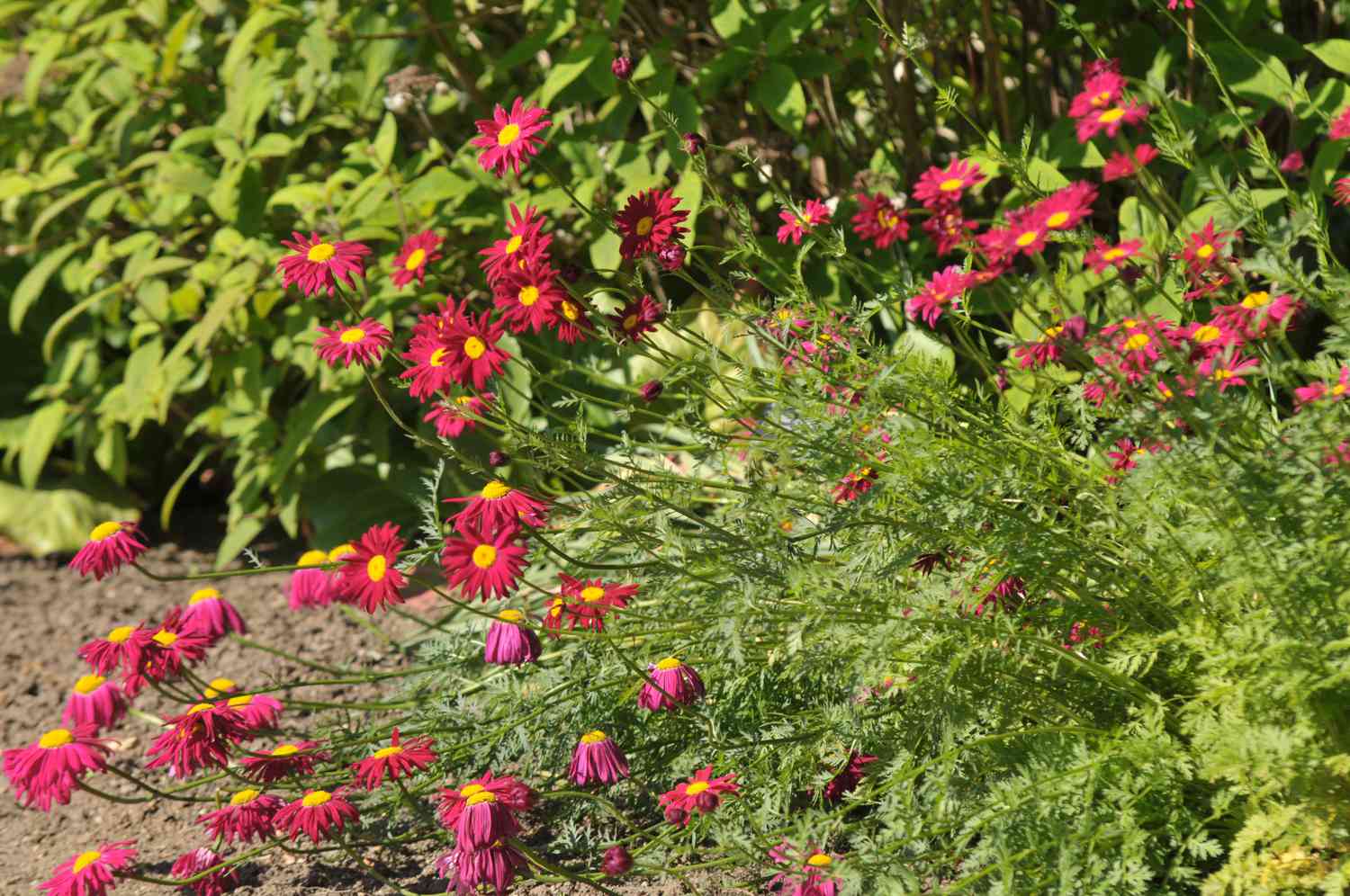
Are you familiar with the Painted Daisy? If not, get ready to be amazed by this captivating flowering plant. Painted Daisy, scientifically known as Tanacetum coccineum, is a popular choice among gardeners and flower enthusiasts due to its colorful and vibrant blooms. But there’s more to this daisy than just its appearance.
In this article, we will explore 10 intriguing facts about the Painted Daisy that will surely pique your interest. From its origins and symbolism to its medicinal uses and cultivation, we will uncover the fascinating world of this beautiful flower. So, whether you want to enhance your gardening knowledge or simply appreciate the wonders of nature, let’s delve into the captivating world of the Painted Daisy.
Key Takeaways:
- Painted Daisy, native to Europe, blooms in vibrant colors and attracts pollinators, making it a low-maintenance and delightful addition to any garden.
- With its long blooming season and cultural significance, Painted Daisy symbolizes innocence and joy, making it a charming and beneficial flower for both gardeners and nature.
Native to Europe
Painted Daisy, scientifically known as Tanacetum coccineum, is a perennial flowering plant that is native to Europe. It has been widely cultivated for its attractive and vibrant flowers.
Diverse Color Varieties
Painted Daisy is known for its stunning bloom colors which can range from vibrant shades of red, pink, and purple, to delicate hues of white and yellow. The flowers typically have a distinctive yellow center with multiple layers of petals.
Long Blooming Season
One of the fascinating aspects of Painted Daisy is its extended blooming season. The flowers typically bloom from late spring to early fall, adding a vibrant splash of color to any garden or landscape.
Attracts Pollinators
Painted Daisy is a magnet for pollinators such as bees and butterflies. The showy flowers with their nectar-rich centers provide an abundant food source for these beneficial insects, contributing to a healthier ecosystem.
Low Maintenance Plant
Painted Daisy is a relatively low maintenance plant, making it an excellent choice for both experienced and novice gardeners. It is drought-tolerant and can thrive in a variety of soil types, provided they have good drainage.
Medicinal Uses
Traditionally, certain indigenous cultures used parts of the Painted Daisy plant for their medicinal properties. The leaves were often used in herbal remedies to alleviate digestive disorders and as a mild sedative.
Symbol of Innocence
In Victorian language of flowers, the Painted Daisy symbolizes innocence and purity. It often finds its place in bouquets, representing the delicate beauty of youth and new beginnings.
Cut Flower Delight
The colorful blooms of Painted Daisy make it a popular choice as a cut flower. They can brighten up any floral arrangement and are known for their long vase life, allowing you to enjoy their beauty indoors.
Companion Planting
Painted Daisy has been used as a companion plant in gardens, as it can help deter certain pests such as aphids and nematodes. Its strong scent acts as a natural repellent, making it a valuable addition to organic gardening practices.
Cultural Significance
In some European cultures, Painted Daisy holds cultural significance. It is often associated with festivals and celebrations, symbolizing joy, love, and happiness.
In conclusion, Painted Daisy is a captivating flower with its beautiful and diverse colors, long blooming season, and beneficial properties for both pollinators and gardeners. Whether you are looking for a vibrant addition to your garden or a charming bouquet for a special occasion, Painted Daisy is sure to bring joy and beauty.
Conclusion
Painted daisies are an intriguing and beautiful plant that holds many interesting facts. From their vibrant colors to their medicinal properties, these flowers have captured the hearts of many garden enthusiasts. Whether you’re looking to add some color to your own garden or simply want to learn more about the natural world around you, painted daisies are a fascinating subject. With their rich history, unique characteristics, and endless possibilities for cultivation, these daisies are a true delight. So, next time you come across a painted daisy, take a moment to appreciate its beauty and remember the remarkable facts that make it such a special flower.
FAQs
Q: How do I care for painted daisies?
A: Painted daisies require well-drained soil and plenty of sunlight. Regular watering and occasional fertilization will help them thrive.
Q: Can painted daisies be grown in containers?
A: Yes, painted daisies can be grown in containers as long as the containers have good drainage. Make sure to choose a container that is deep enough for the roots to grow.
Q: Are painted daisies toxic to pets?
A: Painted daisies are non-toxic to pets, which makes them a safe and beautiful addition to your garden.
Q: Can I use painted daisies for medicinal purposes?
A: Yes, painted daisies have been used in herbal medicine for their anti-inflammatory and pain-relieving properties. However, it is always best to consult with a healthcare professional before using any plant for medicinal purposes.
Q: How do I propagate painted daisies?
A: Painted daisies can be propagated through division or by collecting and sowing their seeds. Division should be done in early spring or fall, while seed collection and sowing can be done in the fall.
Painted daisies' captivating beauty and intriguing characteristics make them a popular choice among gardeners and flower enthusiasts. Their vibrant colors, low-maintenance nature, and medicinal properties have earned them a special place in many hearts. If you found these facts about painted daisies fascinating, you might also enjoy exploring more in-depth information about their unique qualities and cultural significance. Dive deeper into the world of these charming flowers and uncover even more surprising details that will leave you marveling at the wonders of nature.
Was this page helpful?
Our commitment to delivering trustworthy and engaging content is at the heart of what we do. Each fact on our site is contributed by real users like you, bringing a wealth of diverse insights and information. To ensure the highest standards of accuracy and reliability, our dedicated editors meticulously review each submission. This process guarantees that the facts we share are not only fascinating but also credible. Trust in our commitment to quality and authenticity as you explore and learn with us.


